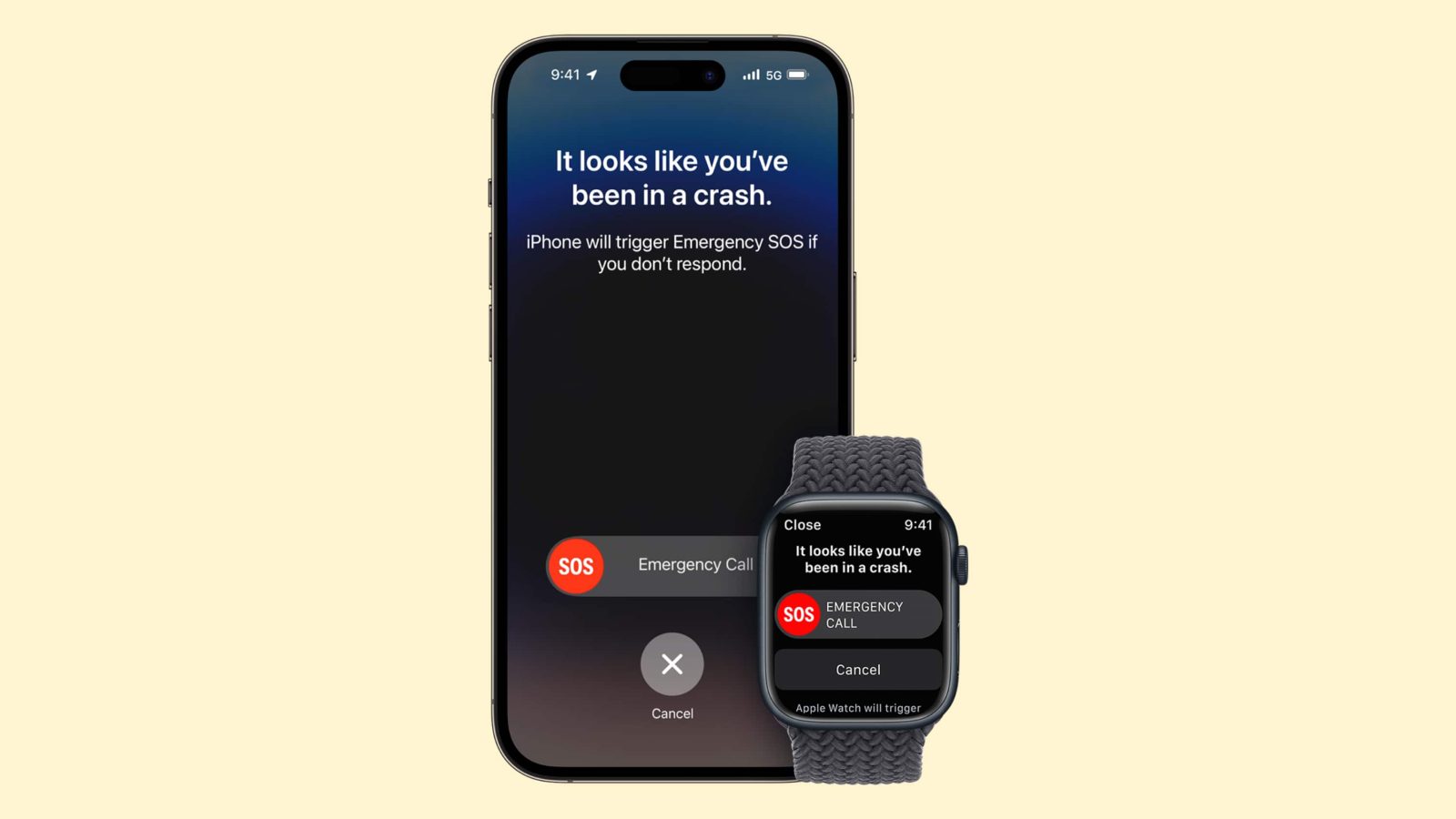
One of the headlining new features of the iPhone 14 lineup and the new Apple Watch models is Crash Detection. This feature is designed to recognize when you’ve been in a car accident, then use Emergency SOS to inform first responders and your emergency contacts.
A new video today puts Crash Detection on the iPhone 14 through several tests – with mixed results.
This is the second video we’ve seen so far to test Crash Detection on the iPhone 14. Last week, a video from YouTuber TechRax tested Crash Detection and showcased how the feature works, successfully triggering an Emergency SOS alert multiple different times.
A new video from YouTubers Luke Miani and Sam Kohl takes things to the next level by testing Crash Detection multiple times with four different cars. The video showcases testing collisions to the front, side, and rear of the cars. There’s even a rollover crash to really put the feature through the paces.
The outcome of these tests, however, is especially interesting: None of the crashes done by Sam and Luke were able to activate the Crash Detection feature. Regardless of the severity of the crash, the Emergency SOS feature never actually popped up on the iPhone 14.
As a refresher, here’s how Apple says Crash Detection on the iPhone 14 should work:
When your iPhone detects a severe car crash, it will display an alert and will automatically initiate an emergency phone call after 20 seconds unless you cancel. If you are unresponsive, your iPhone will play an audio message for emergency services, which informs them that you’ve been in a severe crash and gives them your latitudinal and longitudinal coordinates with an approximate search radius.
When a crash is detected, Crash Detection won’t override any existing emergency calls placed by other means.
More than anything, these early tests show that Crash Detection results can vary for a number of different reasons, and it’s great to have multiple safety nets in place should you ever be in an accident. We also expect Apple to continue refining the feature as it collects more data from real-world examples of the feature in action.
You can watch the full video below to see the tests and results in action (and please don’t try this at home).
FTC: We use income earning auto affiliate links. More.




Comments